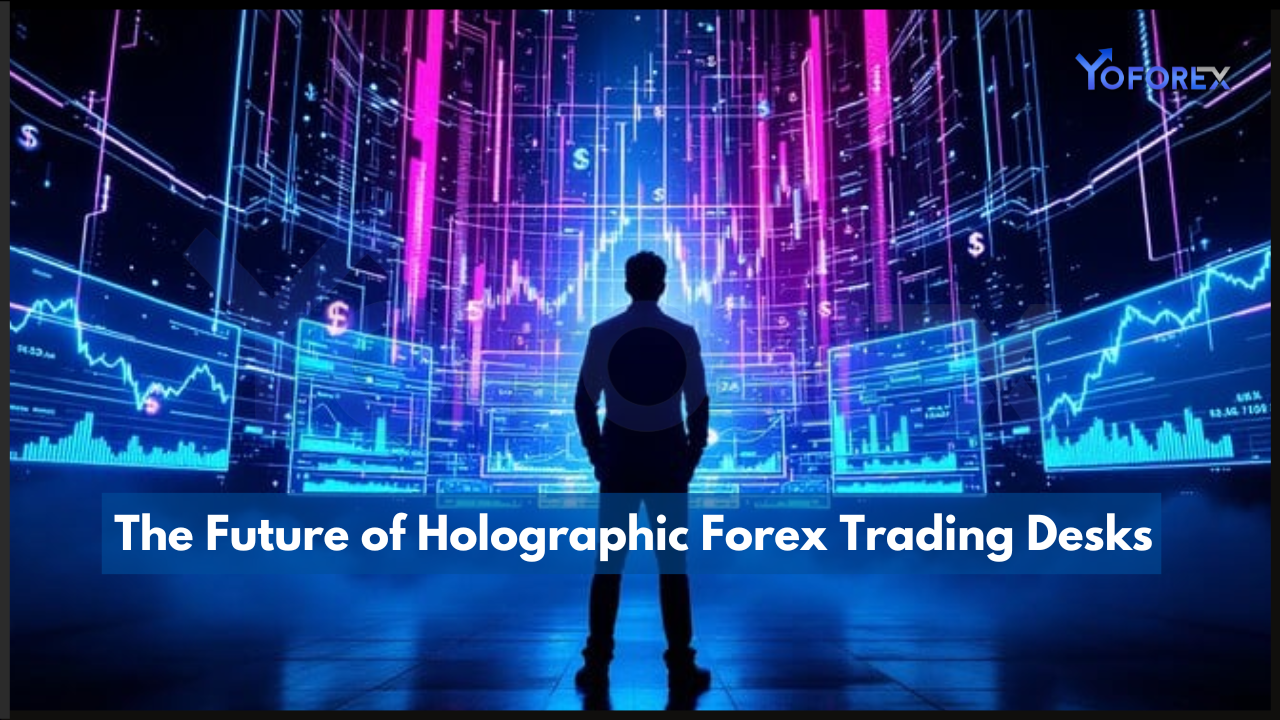The forex market, with its daily trading volume exceeding $6 trillion, has always been at the forefront of technological innovation. As we move further into 2025, the integration of advanced technologies like artificial intelligence (AI), blockchain, and cloud computing is reshaping the trading landscape. Among these innovations, holographic trading desks are emerging as a transformative force, promising to revolutionize how traders interact with the market. This blog explores the potential of holographic forex trading desks, their benefits, challenges, and the broader implications for the future of trading.
The Rise of Holographic Trading Desks
Holographic trading desks represent the next evolution in trading technology. Unlike traditional screens or even augmented reality (AR) interfaces, holographic displays create three-dimensional, immersive environments that allow traders to visualize and interact with market data in real time. This technology leverages advancements in AI, machine learning (ML), and spatial computing to provide a seamless and intuitive trading experience1011.
For instance, traders can project currency pairs, charts, and economic indicators into their physical workspace, enabling them to analyze trends and execute trades with unprecedented precision. The integration of AI-powered predictive analytics further enhances decision-making by identifying patterns and opportunities that might be missed on conventional platforms 69.

Key Features of Holographic Trading Desks
- Immersive Data Visualization
Holographic desks allow traders to view complex datasets in 3D, making it easier to identify correlations and trends. For example, a trader could simultaneously visualize the impact of geopolitical events on multiple currency pairs, enhancing their ability to make informed decisions1014. - Real-Time Collaboration
These desks enable real-time collaboration among traders, regardless of their physical location. Holographic projections can be shared across teams, fostering a more collaborative and dynamic trading environment11. - AI-Driven Insights
By integrating AI algorithms, holographic desks can provide real-time insights and predictive analytics. For instance, an AI-powered holographic system could alert traders to potential market shifts based on historical data and current trends69. - Enhanced Risk Management
Traders can use holographic interfaces to simulate different trading scenarios and assess potential risks. This capability is particularly valuable in a volatile market, where quick decision-making is crucial710.
Benefits of Holographic Trading Desks
- Improved Efficiency
The ability to visualize and interact with data in 3D reduces the time required to analyze complex information. This efficiency translates into faster decision-making and better trading outcomes1011. - Greater Accessibility
Holographic technology democratizes access to advanced trading tools. Retail traders, who may not have access to institutional-grade resources, can now leverage cutting-edge technology to compete in the market14. - Enhanced User Experience
The immersive nature of holographic desks makes trading more engaging and intuitive. This improved user experience can lead to higher levels of trader satisfaction and retention10. - Scalability
As the forex market continues to grow, holographic desks offer a scalable solution for managing increasing volumes of data and transactions. This scalability is essential for both retail and institutional traders11.
Challenges and Considerations
- High Initial Costs
The development and implementation of holographic trading desks require significant investment. This cost may be prohibitive for smaller firms or individual traders10. - Technical Complexity
Integrating holographic technology with existing trading platforms and infrastructure can be challenging. Ensuring compatibility and seamless operation will be critical for widespread adoption11. - Data Security
As with any advanced technology, data security is a major concern. Protecting sensitive trading information from cyber threats will be paramount9. - Regulatory Compliance
The use of holographic technology in trading may raise new regulatory questions. Ensuring compliance with existing financial regulations will be essential14.
The Future of Holographic Trading Desks
The adoption of holographic trading desks is expected to accelerate in the coming years, driven by advancements in AI, ML, and spatial computing. As these technologies become more affordable and accessible, they will likely become a standard feature of modern trading environments1011.
Moreover, the integration of blockchain technology could further enhance the functionality of holographic desks. For example, blockchain’s decentralized ledger system could provide a secure and transparent framework for recording and verifying transactions, reducing the risk of fraud and manipulation9.
In the long term, holographic trading desks could pave the way for entirely new forms of trading. For instance, the tokenization of real-world assets on blockchain platforms could enable traders to interact with fractionalized assets in a holographic environment, opening up new opportunities for diversification and risk management910.
Conclusion
Holographic forex trading desks represent a bold step into the future of trading. By combining immersive visualization, real-time collaboration, and AI-driven insights, these desks offer a powerful tool for navigating the complexities of the forex market. While challenges remain, the potential benefits of this technology are too significant to ignore.
As we look ahead to 2025 and beyond, traders and institutions that embrace holographic technology will be well-positioned to thrive in an increasingly competitive and dynamic market. The future of forex trading is not just about predicting market movements—it’s about redefining how we interact with the market itself.

